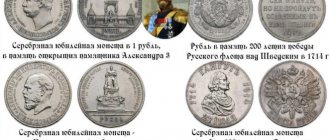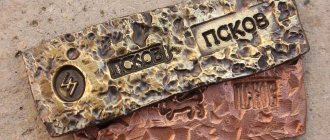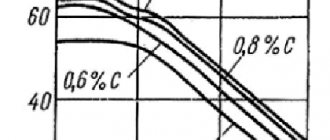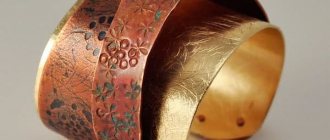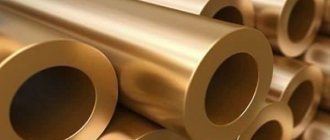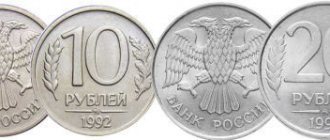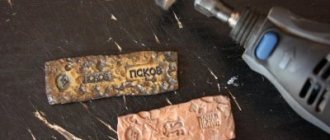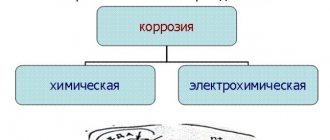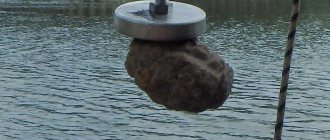Rules and methods of patination
It's no secret that metals oxidize over time when exposed to air and water. But this happens differently for different alloys. If steel or iron is destroyed as a result of such exposure, then the copper is covered with a dark protective film. It is this layer that gives a special chic to antique items, indicating their authenticity.
Often, in the desire to remove dirt from a coin, it is subjected to mechanical processing, as a result of which the patina is also removed. It is quite possible to return the noble insignia after this. Often, artificial patination of copper coins is justified from an aesthetic point of view, since it helps to hide the results of their cleaning.
Required Tools
Depending on the chosen method of applying patina, it is necessary to prepare tools and materials. The minimum set includes:
- glass or plastic container;
- selected chemical reagent;
- beaker;
- stir sticks;
- synthetic brush;
- degreasing liquid;
- latex gloves;
- respirator;
- soap;
- sponge;
- unnecessary clean rags;
- cotton pads.
When all this is collected, you can begin the experiment.
Patina process
Of course, the presence of a “native” layer of oxides is much preferable, because it not only indicates the value of the specimen, but also reliably protects the coin from damage. If it is possible to preserve the natural plaque, then it is better not to touch it. When artificial aging is unavoidable, patina is applied independently. Patination is usually carried out using one of the following methods:
- dip coins into the prepared solution;
- place the monetary sample in a vapor-gas environment;
- apply the composition to the surface with a brush.
The quality of the final result directly depends on the method of obtaining the patina
The quality of the final result directly depends on the method used to obtain the patina and how well the coin was prepared.
First of all, the coins are cleaned of fat and oxides. This is done with a cotton pad soaked in white spirit or gasoline. These liquids are good at removing greasy marks that interfere with the oxidation process and the reaction of the patination solution with copper. It is also necessary to wear gloves, because... the patina will lie unevenly on fingerprints left behind.
Features and methods of patination of coins at home
Depending on the metal, there are a fairly large number of methods for applying patina to a coin. All of them are feasible and do not require the knowledge of ancient alchemists and a special laboratory. Most types of patina can be achieved using simple methods, but you should not expect a super effect from it. The resulting layer will not hide coin defects, such as holes, potholes, nicks, smudges, but will only change their color.
The better the patination, the more valuable the coin will become. Experienced collectors know that artificial patina does not add financial value to items. But the patina, induced according to all the rules, is no different from natural. The coin acquires a noble, rare appearance in the eyes of potential buyers. There is no universal oxidation method and the most suitable one can only be selected experimentally.
Patination of copper coins
Patination of a copper coin is performed with sulfuric acid. The product is applied to the metal, and literally within a few seconds it darkens. After the procedure, the product must be washed with soap so that oxidative processes do not continue. The patina resulting from sulfur ointment has a fairly rich black color, but it is unstable. If you rub the surface with a cloth, the plaque will be erased, so this method should be used as a last resort.
Patination of copper coins with ammonia is carried out in a well-ventilated area, because the vapors of the substance are quite corrosive. The coin being processed is oxidized in a closed jar or container. To do this, it is placed in a container with ammonia so that it comes into contact only with its vapors, and not with the liquid. Close the container tightly and wait 15-30 seconds. If you leave the coin for a long time, it can be damaged. The patina will not become darker, and pockets of corrosion will appear on the product.
Coping with the task of treating a coin with ammonia fumes is easier in words than in practice. It is either suspended or placed on a cotton pad inside the jar. This will allow it to develop a patina evenly on both sides. Alcohol is poured at the very end, after preparatory manipulations. Then close the container tightly with a lid.
Vapors of ammonia can cover a coin with an even layer of patina of a pleasant brown color in a few minutes. The shine is eliminated, and the product takes on a beautiful, rare look.
Copper coins are patinated using sulfuric acid.
Patination of coins with potassium permanganate and copper sulfate gives quick results and a brown tint. They take unnecessary utensils for work, because... After patination, it is unlikely to wash off and will have to be thrown away. To prepare the solution, take 200 ml of distilled water and one gram of powders. Mix everything thoroughly, bring to a boil on the stove and drop a coin into the resulting mixture for 1-2 minutes.
The longer the coin sits in the solution, the darker the patina it will develop. After 10 minutes the product will become almost black. This must be taken into account when achieving the desired shade of the oxide film.
Patination of silver coins
It is quite easy to darken silver coins. To do this you will need ammonia or ammonia. The product is placed in the freezer for 20-30 minutes. After this, they take it out, take it by one edge with tweezers and bring it to an open bottle of ammonia. It literally immediately begins to react to ammonia vapors and becomes covered with a gray patina. I stop the procedure when the silver acquires the desired shade.
Three ways to patina copper coins
Three ways to patina copper coins
Post by Admin » 18 Nov 2021, 16:04:34
In general, today turned out to be a “home day”, which means we can experiment a little. Since I didn’t have any uncleaned coins, I had to take coins from the collection and “torture” them.
In general, to start with, I took three three rubles
1. Patination with sulfur ointment 2. Patination by heating 3. Patination of copper coins with copper sulfate and potassium permanganate
So. Part one. Sulfuric ointment.
I’ve been familiar with this method for a long time and have already gotten pretty good at it, but it’s still not always possible to achieve the desired result right away. Therefore, we take sulfur ointment and begin to rub a coin with it in a basin of warm water. You can apply it to your fingers in a very thin layer, this will be enough for the coin to begin to darken.
The result is different, although it removed the excess, but not critically.
Part two. Heating.
This is also thermal patination . So, heat the coin on gas until it turns golden, not red, but golden. After which it is removed from the aggressive environment and cooled naturally to a temperature that does not injure the body. Next - with your fingers, lightly (slightly) fertilized with baby cream, again in a circular motion until completely satisfied. Then again with soap and a soft brush in warm water. When a coin overheats, the patina will certainly fall off in pieces.
I don’t know what happened to me, this was the first experiment, I either overexposed it or underexposed it, so it turned out rainbow colors for me
The color turned out interesting, if not for these stains.
Part Three. Vitriol and potassium permanganate.
This method is completely new to me, I did everything according to technology, although the solution may have turned out a little stronger than needed. So we dilute copper sulfate and potassium permanganate with water, stir well and put it all in a steam bath in boiling water
As a result, these are the coins that became
Perhaps it’s all due to lack of experience and other things, but for me there is still nothing better than sulfur ointment, except, of course, for the natural patina. The rest is up to you, as well as experimenting to determine the optimal result for you.
Patination of silver coins with egg
This is the simplest method of patination; no reagents are needed at all; in addition, the process is not fast and you can always settle on the desired degree of patina.
To patina with an egg, you will need to hard-boil one chicken egg, when the egg has cooled to a temperature slightly above room temperature, you need to peel it and put it in a container (ordinary plastic with a lid), then put a silver coin or several in the container and close the lid. It is better not to use a hot egg as it is not convenient to clean and steam comes from the hot egg and condensation may form on the coin which will lead to uneven patina. It is worth noting that it is advisable to first clean the coin with ammonia or citric acid so that the surface is completely clean and the patina lies evenly.
These 5 stamps were patinated with egg for five hours in a closed container, during which the coin was turned over several times. A coin patinated with egg produces a very specific patina, the so-called rainbow, it is very durable and shimmers in different colors depending on the viewing angle.
Patination of silver coins with sulfur ointment
Silver coins do not need as much patina as copper coins, but silver coins often sparkle white after cleaning and require a patina to achieve an older appearance.
To apply patina to a silver coin with sulfur ointment, almost the same operations are carried out as on a copper coin, but there are differences. First, the coin should be cleaned in ammonia or citric acid so that the surface is clean and there are no uneven areas. Next, sulfur ointment is applied to the coin, applied in an even, thick layer. Since silver is much less chemically active than copper, patina forms much more slowly. To speed up the application of patina, the coin must be heated; at home, the best way to do this is to place the coin on a cotton pad or soft cotton cloth and heat it with a hairdryer. In 1-2 minutes the silver coin becomes completely dark. Afterwards, the coin must be washed with soap to remove any remaining ointment.
After applying the patina, the coin was rubbed with felt so that the patina on the protruding parts of the coin was a little erased and the relief was more clearly visible. For this coin, such an operation gives a more advantageous appearance, but for heavily worn coins it allows you to raise the relief and sometimes distinguish details that were not noticeable before.
Patination of copper coins with ammonia vapor
In order to apply patina to a coin using ammonia, place the coin in a closed container with ammonia vapor for 10-30 minutes, but do not allow the coin to come into contact with the liquid. From a technical point of view, everything is simple, but when it comes to implementation, some difficulties may arise.
While preparing materials for this article, 2 coins were hopelessly lost. To prevent this from happening, follow these simple recommendations:
- Since ammonia has a strong odor, patination should be done in a closed jar or container.
- The coin must either be hung, secured by the edge, or placed on any object inside the container, but not just placed, but on a cotton pad, this will allow the coin to become covered with patina evenly on both sides.
- You need to pour a little ammonia (5-10 grams) into the bottom of the container; it is best to do this at the very end after the rest of the preparations and immediately close the lid.
- Under no circumstances should you heat a closed container; this will cause condensation to form on the coin and cause a very uneven patina.
Vapors from ammonia literally cover the coin in just a few minutes with an even layer of patina of a pleasant brown color. The coin stops shining and looks very attractive. If the coin is left for several hours, the patina does not become more saturated, but pockets of corrosion begin to appear.
Patination of copper coins with potassium permanganate and copper sulfate
Patination of coins in a solution of copper sulfate and potassium permanganate gives quick results and a pleasant brown patina. A coin or other object must be immersed in a boiling solution for 1-2 minutes.
To prepare the solution, it is best to use distilled water, for one glass of water (200 ml) you need to add 1 gram of potassium permanganate and 1 gram of copper sulfate, mix the solution thoroughly and place it on the stove in a container that you don’t mind - after patination of the coins, you most likely won’t be able to wash the container .
The longer the coin is in the solution, the darker the patina you can get - after 10 minutes the patina becomes almost black. The 1855 penny from the example spent about 1 minute in a boiling solution. Also shown is an image of the coin before cleaning it with Trilon-B.
Patination methods
In order to give coins an aesthetic appearance and increase the selling price, several methods of applying patina are used.
Coin before and after applying patina
Patination of copper coins can be done at home using:
- ammonia;
- sulfur ointment;
- manganese and copper sulfate;
- sodium hyposulfite;
- gas stove;
- ammonia.
1) If you want to give a copper coin a nice brown color, you can use ammonia for patination. To do this, place the coin in a closed container with alcohol vapor, but the coin should not touch the liquid. To do this, hang or place the coin so that all its sides can be covered with an even film. A closed container should not be heated as condensation may form, which will lead to uneven patination. Leave the coin to steam for just a few minutes, do not overcook.
2) In order to give the coins a dark brown color, apply sulfur ointment to it, rubbing in thoroughly. But do it underwater. When the coin begins to darken a little, remove it from the water. Dry well with a napkin, as if you do not remove all the sulfur ointment, the coin may turn black. After all the procedures, leave it alone for two days, then polish it with Vaseline oil.
3) Applying a patina to copper coins using manganese or copper sulfate is a good way to achieve a light or dark brown color. To do this, make a solution of half a liter of water, three grams of manganese, 30 grams of vitriol. Heat it to 90 degrees, put coins in the solution for about five minutes, but after every minute turn them over to the other side. Take it out, look at the color, if it’s pale, add more. Once you have achieved the desired shade, rub the coin thoroughly with your fingers.
4) To obtain a bronze color, use sodium hyposulfite. Dip a coin into it for a few seconds and wipe well with a napkin.
5) A copper coin can be heated with gas. Hold the coin with a clip and heat it until golden brown, then apply baby cream using your fingers. The coin will be covered with a light brown film.
6) Another way to get a light brown patina is more complex. To do this you will need a rust neutralizer and pieces of copper. We wait until the color of the copper turns bluish-green, after which we take it out of the neutralizer and put coins in it. Rinse the coin with water and apply sulfur ointment.
7) You can patina a coin using ammonia. To do this, take a container and pour ammonia into the bottom. Place a glass or glass, place a cotton pad on top, and a coin on it. The coin should not touch ammonia; it will patina in the vapor. Be sure to close the container. After fifteen minutes, turn the coin over to the other side.
Applying patina correctly requires skill. After several attempts, you will already know how to achieve the desired effect. Patinated coins are cheaper than products with a “original” protective film, so patina coins only after its film is destroyed or damaged.
Using Vinegar
In order to age a copper item with vinegar, you need to carefully prepare it. The preparation process consists of several stages:
You can age copper in vinegar
- If the copper product is covered with a layer of varnish, then it must be removed. To do this, you need to either hold the product in a container with acetone, or carefully treat it with a brush with the same product;
- Next, the copper item needs to be poured with hot water and rinsed so that the varnish comes off completely;
- if the copper item does not have any additional coating, then it will be enough to simply wash it with soap;
- The aging process cannot be started if the product is not dry enough. To speed up drying, you can use a hair dryer, but before doing this, make sure that there are no traces of protective coating left on the copper, otherwise the copper product may catch fire.
After the preparatory stage is completed, you can begin processing with vinegar. The big advantage of this method is that you do not need to work with harmful substances and you always have vinegar on hand in the kitchen.
As with acetone, you can either dip the item in vinegar or apply it to a brush and thoroughly treat the item. Also, if you need to get a green patina, you can add a spoonful of salt to the vinegar. After the desired result is achieved, the copper item should be rinsed in warm water and gently dried with a towel.
What is patination and indications for the procedure
The word "patina" is an Italian term. They first learned about it after a chemical experiment was carried out, the reaction of which was the transformation of the surface of the coin. On a silver or copper alloy, a dark coating looks beautiful, but on aluminum it is a cloudy film, which is why such items lose value.
An important condition for patina is complete coverage of the metal, because... individual spots will not add charm to the coin. Therefore, the uneven coating is removed and applied artificially. But, if the oxide film has penetrated deep into the alloy, it is not recommended to touch it. After cleaning, such products will turn into thin plates with shapeless potholes instead of a pattern.
Patination of coins is carried out for several reasons:
- The specimen was purchased or found in poor condition, with traces of corrosion and in need of cleaning. The appearance of excavated cash samples largely depends on the area in which it was found and the quality of the soil;
- increase in cost. Ancient coins with a noble brown coating are much more valuable than coins with green spots on the surface;
- ignorance of the true value of a coin with natural traces of oxidation and the desire to make it shine leads to the loss of the product’s significance. Most often, the patina is worn off or the coin is thrown into acid, after which its color turns yellow-orange.
Patination of coins increases value
Patination is carried out by a chemical reaction, during which a film or coating is formed. Many years of practice have shown what methods exist for applying patina and how to perform the procedure at home. In the process, you need to maintain the proportions of the substances, otherwise you may lose your rare coin forever.
Patination of copper coins with sulfur ointment
To demonstrate various methods of applying patina, modern coins will be used - 1 US cent. This coin is minted from copper, like many ancient coins. And most importantly, you can try different patination methods on several completely identical coins and compare the results.
Sulfur ointment is applied to the coin and literally within a few seconds it turns dark. After treatment with sulfur ointment, its residues must be washed off with soapy water. The patina resulting from the sulfur ointment has a fairly rich black color. The resulting patina is not quite durable and if you rub the coin with felt it will wear off, this should be used to give the coin a more prominent and contrasting appearance.
Patination of bronze/brass coins by electrolysis
In most cases, bronze or brass coins do not need additional patina, this is due to the fact that they are naturally quickly covered with a strong protective film of oxides and are perfectly preserved in this form.
But sometimes, during the cleaning process or when stored for a long time in the ground or in improper conditions, coins become covered with uneven spots with a patina of different colors. In other words, when a brass coin with good relief does not look beautiful, you can try to cover it with a patina using electrolysis.
These five kopecks are a dug coin; oxides of uneven color have formed on it in the ground over decades. Electrolysis was used to give it an even patina. A soda solution was used as an electrolyte, the current source was a charger for a car battery (current 2 A), a coin was attached to “-”, a sacrificial coin was attached to “+” (about the same nickel, it is important that the metal was the same , the same as the coin being processed). Patina application time is 2 minutes. After electrolysis, the coin was ground in soda paste.
Source: https://99-kopeek.ru/articles/patinirovanie
